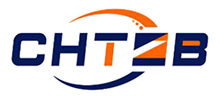Bearing Introduction
release time:
2022-10-25
China is one of the countries that invented rolling bearings earlier in the world. In Chinese ancient books, the structure of axle bearings has long been recorded. According to the archaeological relics and materials, the oldest bearing in China with the embryonic form of modern rolling bearing structure appeared in Xuejiaya Village, Yongji County, Shanxi Province, in 221~207 BC (Qin Dynasty).
China is one of the countries that invented rolling bearings earlier in the world. In Chinese ancient books, the structure of axle bearings has long been recorded. According to the archaeological relics and materials, the oldest bearing in China with the embryonic form of modern rolling bearing structure appeared in Xuejiaya Village, Yongji County, Shanxi Province, in 221~207 BC (Qin Dynasty). After the founding of New China, especially since the 1970s, under the strong impetus of reform and opening up, the bearing industry has entered a new period of high-quality and rapid development.
At the end of the seventeenth century, C. Warlow of England designed and manufactured ball bearings, which were installed on mail cars for trial use, and P. Worth of England obtained a patent for ball bearings. At the end of the 18th century, H.R. Hertz of Germany published a paper on contact stress of ball bearings. On the basis of Hertz's achievements, Germany's R. Stribeck and Sweden's A Pamgren et al. conducted a large number of tests, which contributed to the development of the design theory and fatigue life calculation of rolling bearings. Later, Russian N.P. Petrov applied Newton's viscosity law to calculate bearing friction.
Britain's O Reynolds made a mathematical analysis of Torr's discovery and derived Reynolds equation, which laid the foundation of hydrodynamic lubrication theory. The early form of linear motion bearing is to place a row of wooden poles under the skid. This technique may be traced back to the construction of the Great Pyramid of Giza, although there is no clear evidence. Modern linear motion bearings use the same working principle, but sometimes use balls instead of rollers. The earliest sliding and rolling element bearings were made of wood. Ceramics, sapphires or glass are also used, and steel, copper, other metals and plastics (such as nylon, bakelite, Teflon and UHMWPE) are widely used.
From heavy-duty wheel shafts and machine tool spindles to precision clock parts, rotating bearings are required in many occasions. The simplest rotary bearing is the sleeve bearing, which is just a bushing clamped between the wheel and the axle. This design was subsequently replaced by rolling bearings, in which many cylindrical rollers were used to replace the original bushings, and each roller was like a separate wheel. The earliest practical rolling bearing with cage was invented by watchmaker John Harrison in 1760 for making H3 hour meter.
Early examples of ball bearings were found on an ancient Roman ship found in the Italian Lake Nami. This wooden ball bearing is used to support the rotating table top. The ship was built in 40 BC. It is said that Leonardo da Vinci once described a ball bearing around 1500. Among various immature factors of ball bearings, one of the most important is that the balls will collide with each other, causing additional friction. But you can prevent this phenomenon by putting the ball into small cages.
In the 17th century, Galileo made the earliest description of "fixed ball" or "cage ball" ball bearing. However, for a long time afterwards, the installation of bearings on the machine has not been realized. The first patent on the raceway was obtained by Philip Vaughn of Camasson in 1794.
In 1883, Friedrich Fisher put forward the idea of using appropriate production machines to grind steel balls with the same size and accurate roundness. This laid the foundation for creating an independent bearing industry. The initial combination of "Fischers Automatische Guß stahlkugelfabrik" or "Fischer Aktien Gesellschaft" later became a trademark, which was registered on July 29, 1905.
In 1962, the trademark FAG was modified and remains in use today, and became an integral part of the company in 1979.
In 1895, Henry Timken designed the first tapered roller bearing. Three years later, he obtained a patent and established Timken Company.
In 1907, Sven Winquist of SKF Bearing Factory designed the earliest modern self-aligning ball bearing.
related news
How to choose the type of bearing?
2022-10-25
How deep groove ball bearings work
2022-10-25
How Should Bearings Be Cleaned?
2022-10-25
2022-10-25
2022-10-25
2022-10-25

Contact us
Add: Changtian Bearing Co., Ltd., Yandian Industrial Park, Linqing City, Liaocheng City, Shandong Province, China
Overseas Sales Manager: Alex Meng
Whatsapp : +8619806081000
WeChat : 19806081000
E-mail:Alex@chtzb.com
Domestic Business Manager:
Mr. Meng+8615166509888 WeChat account
Copyright © 2022 Shandong Changtian Bearing Co.,Ltd







 Alex@chtzb.com
Alex@chtzb.com

 +86-19806081000
+86-19806081000